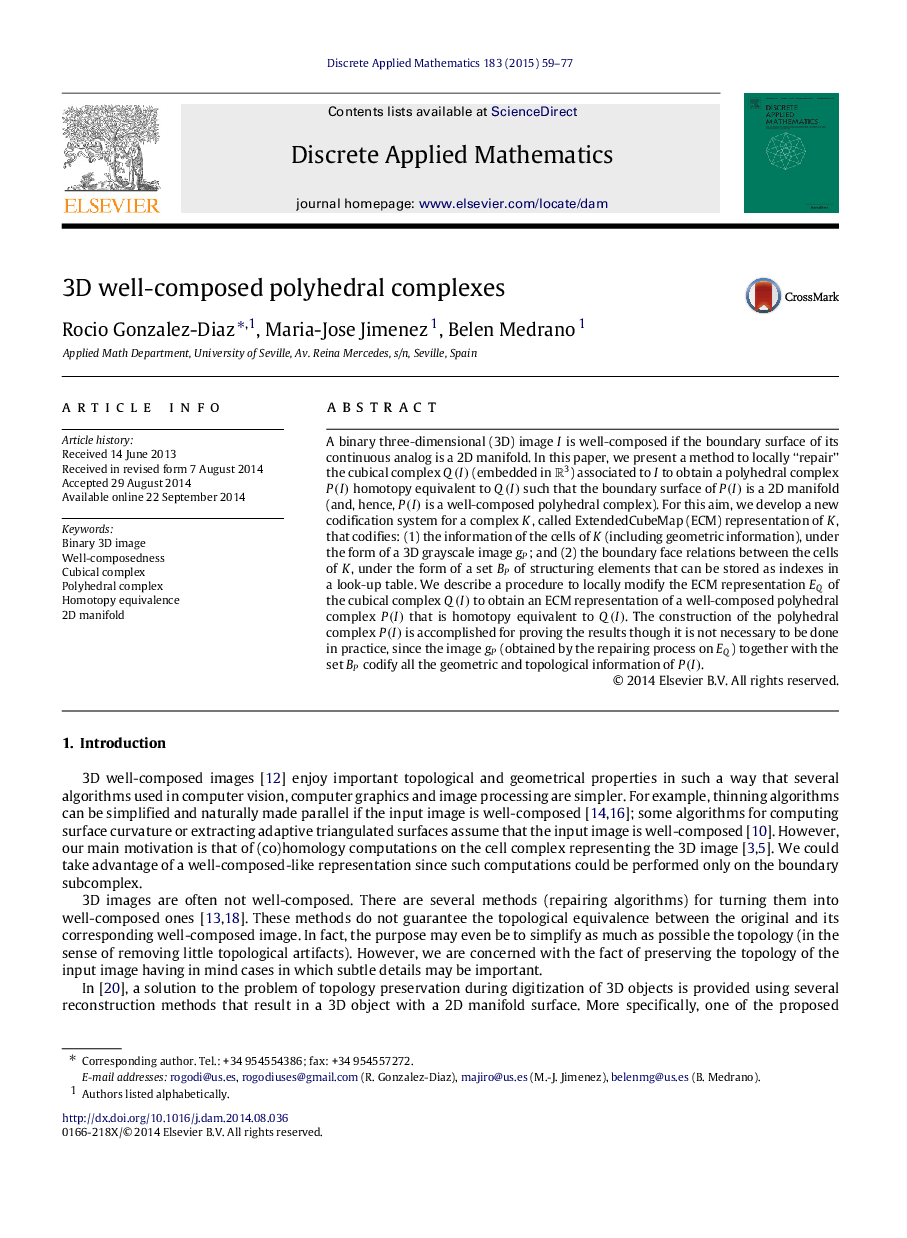| Article ID | Journal | Published Year | Pages | File Type |
|---|---|---|---|---|
| 418620 | Discrete Applied Mathematics | 2015 | 19 Pages |
A binary three-dimensional (3D) image II is well-composed if the boundary surface of its continuous analog is a 2D manifold. In this paper, we present a method to locally “repair” the cubical complex Q(I)Q(I) (embedded in R3R3) associated to II to obtain a polyhedral complex P(I)P(I) homotopy equivalent to Q(I)Q(I) such that the boundary surface of P(I)P(I) is a 2D manifold (and, hence, P(I)P(I) is a well-composed polyhedral complex). For this aim, we develop a new codification system for a complex KK, called ExtendedCubeMap (ECM) representation of KK, that codifies: (1) the information of the cells of KK (including geometric information), under the form of a 3D grayscale image gPgP; and (2) the boundary face relations between the cells of KK, under the form of a set BPBP of structuring elements that can be stored as indexes in a look-up table. We describe a procedure to locally modify the ECM representation EQEQ of the cubical complex Q(I)Q(I) to obtain an ECM representation of a well-composed polyhedral complex P(I)P(I) that is homotopy equivalent to Q(I)Q(I). The construction of the polyhedral complex P(I)P(I) is accomplished for proving the results though it is not necessary to be done in practice, since the image gPgP (obtained by the repairing process on EQEQ) together with the set BPBP codify all the geometric and topological information of P(I)P(I).
